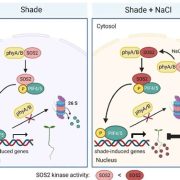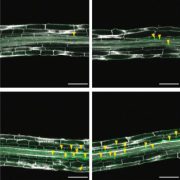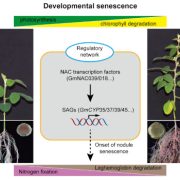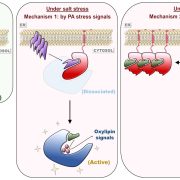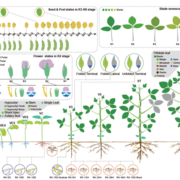The Membrane-bound Transcription Factor GmNTL1 Promotes Salt Tolerance in Soybean
Zhang et al. identified a membrane-bound NAC transcription factor GmNTL that can be oxidized and released from the endoplasmic reticulum to the nucleus, thereby regulating downstream target genes to promote salt tolerance in soybean.
Plant Cell https://doi.org/10.1093/plcell/koad250
Wenxiao Zhang, Wenjiao Zhi, Hong Qiao, Jingjing Huang, Shuo Li, Qing Lu , Nan Wang, Qiang Li, Qian Zhou, Jiaqi Sun, Yuting Bai, Xiaojian Zheng, Mingyi Bai, Frank Van Breusegem, Fengning Xiang
Background: Worldwide, soybean (Glycine max) production is often adversely affected by salinity. Reactive oxygen species (ROS) are key signaling molecules that enable cells to rapidly respond to different stimuli, regulating plant growth and development by mediating oxidative post-translational modifications (OxiPTMs) of proteins. Thus, identifying the underlying mechanisms of redox regulation and its contribution to various physiological processes is a current research hotspot.
Question: The membrane-bound NAC WITH TRANS-MEMBRANE MOTIF1-LIKE (NTL) transcription factors play critical roles in plant responses to various environmental stimuli. However, how GmNTLs translocate to the nucleus and regulate salt tolerance remains unclear.
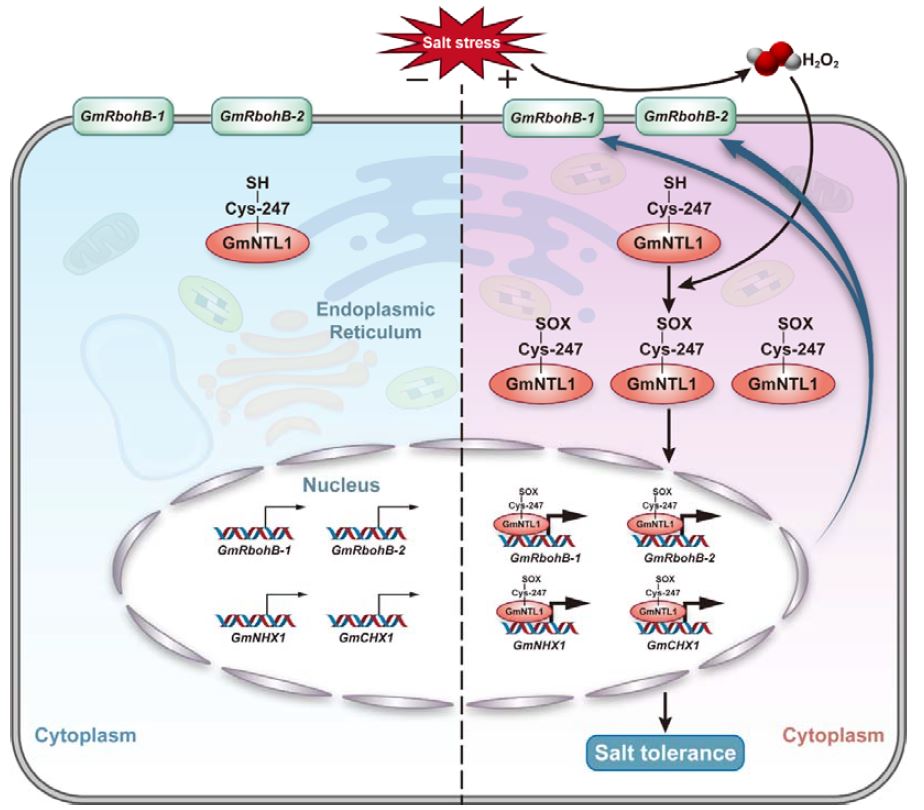
A model for the role of GmNTL1 in H2O2-mediated induction of gene expression under salt stress.
Findings: Our study reports that GmNTL1 is released from the endoplasmic reticulum (ER) and translocates to the nucleus upon NaCl or hydrogen peroxide (H2O2) treatment. Salt-induced H2O2 production increases GmNTL1 nuclear import and DNA-binding activity by oxidizing cysteine 247. Furthermore, GmNTL1 oxidation directly activates the expression of RESPIRATORY BURST OXIDASE HOMOLOG B (GmRbohB) genes, affecting the production of H2O2, thereby forming a feed-forward loop to fine-tune GmNTL1 activity. In addition, the oxidation of GmNTL1 further activates the expression of CATION H+ EXCHANGER 1 (GmCHX1)/SALT TOLERANCE-ASSOCIATED GENE ON CHROMOSOME 3 (GmSALT3) and Na+/H+ EXCHANGER 1 (GmNHX1), reducing root Na+ accumulation and improving soybean salt tolerance.
Next Steps: Given that OxiPTMs are highly dynamic and interconvertible, we will next focus on analyzing the reduction mechanisms of GmNTL1. Understanding how GmNTL1 regulates cellular redox dynamics will generate new ideas to elucidate soybean salt stress responses.
Reference:
Wenxiao Zhang, Wenjiao Zhi, Hong Qiao, Jingjing Huang, Shuo Li, Qing Lu, Nan Wang, Qiang Li, Qian Zhou, Jiaqi Sun, Yuting Bai, Xiaojian Zheng, Mingyi Bai, Frank Van Breusegem, Fengning Xiang. (2023). H2O2-dependent oxidation of the transcription factor GmNTL1 promotes salt tolerance in soybean. https://doi.org/10.1093/plcell/koad250.


